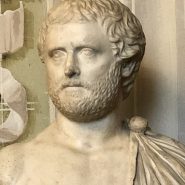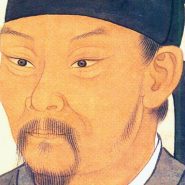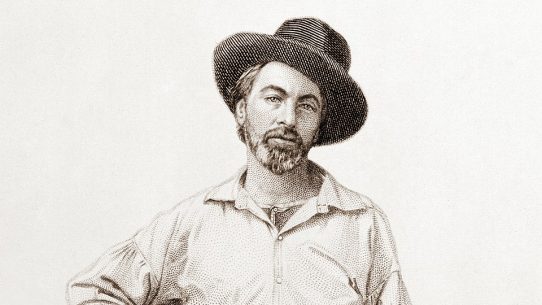Introduction
William Blake (1757–1827) occupies a singular place in English literature as both poet and artist — a visionary whose imagination bridged the worlds of art, mysticism, and revolution. Dismissed by many of his contemporaries as eccentric, Blake is now celebrated as one of the most original and prophetic voices in literary history.
His illuminated poems, etched and illustrated by his own hand, reveal a universe alive with angels, demons, and the divine energies of creation. Blake saw art as a form of revelation — a means to restore spiritual vision in an age dominated by reason and materialism. His work, often misunderstood in his lifetime, foretold the Romantic movement and continues to influence artists, poets, and thinkers to this day.
Early Life and Education
William Blake was born on November 28, 1757, in Soho, London, the third of seven children to James and Catherine Blake. His father was a modest hosier, and though the family was not wealthy, they recognized William’s artistic gifts early on. He received little formal education but was deeply self-taught, guided by an inner world of imagination that would define his life. As a boy, Blake claimed to see visions — angels in trees, prophets walking the streets — experiences that never ceased throughout his adulthood. Rather than dismissing these sights, Blake embraced them as glimpses of spiritual truth.
At the age of ten, Blake was sent to a drawing school, and by fourteen, he was apprenticed to the engraver James Basire. The training gave him both artistic skill and independence, allowing him to support himself while pursuing his own creative path. He later studied briefly at the Royal Academy, where he was repelled by what he saw as the artificial conventions of academic art. His true education came from his inner life and from reading — the Bible above all, but also Milton, Dante, and the revolutionary thinkers of his time.
Literary Career and Major Works
Blake’s first book of poems, Poetical Sketches (1783), announced a voice both lyrical and defiant, filled with youthful energy and a sense of visionary purpose. But it was in the 1790s that Blake’s mature genius emerged. Rejecting traditional publishing, he developed a unique method of “illuminated printing,” in which he engraved both text and image on copper plates and hand-colored the results. This fusion of art and poetry gave rise to his most enduring works, including Songs of Innocence (1789) and Songs of Experience (1794). Together, these collections form one of the great achievements of English Romanticism — a spiritual drama tracing the human journey from purity through corruption toward redemption.
Blake’s work in the revolutionary 1790s reflected his engagement with the political and spiritual upheavals of his age. The Marriage of Heaven and Hell (1790–93) proclaimed his radical belief that good and evil, reason and energy, must coexist to achieve human wholeness. Visions of the Daughters of Albion (1793) condemned oppression, particularly the sexual and moral subjugation of women. America: A Prophecy (1793) and Europe: A Prophecy (1794) celebrated the revolutionary spirit sweeping across the Atlantic world, envisioning freedom as a divine birthright rather than a political slogan. In later years, he expanded his mythological vision through vast prophetic books such as Milton (1804–08) and Jerusalem (1804–20), which sought to reconcile divine imagination with human history.
Style, Themes, and Influence
Blake’s poetry defies easy classification, combining biblical grandeur with childlike simplicity. His central theme was the liberation of the human spirit — freedom from tyranny, dogma, and the “mind-forged manacles” of social convention. He saw imagination not as fantasy but as the very substance of reality, “the divine body in every man.” The material world, to Blake, was a shadow of eternal truth; only vision could pierce the veil.
In Songs of Innocence, he depicted the world through the pure eyes of childhood — a state of divine harmony. In Songs of Experience, he exposed the corruption and hypocrisy that cloud the human soul. The tension between innocence and experience became his central dialectic, expressing his belief that spiritual wisdom emerges only through struggle. His poetry is rich with archetypal symbols — lambs, tigers, angels, and cities of gold — drawn from the Bible, myth, and his own visionary cosmology.
Blake’s influence extends far beyond poetry. His art and ideas anticipated Romanticism’s emphasis on imagination, as well as modern movements in symbolism, surrealism, and visionary art. His prophetic writings inspired not only poets like Yeats and Ginsberg but also painters, musicians, and spiritual seekers. He taught that creation itself was divine — that every act of imagination was a spark of God’s eternal energy.
Later Life and Legacy
Blake’s life was one of poverty, isolation, and quiet perseverance. He married Catherine Boucher in 1782, a woman of humble background who became his lifelong companion and collaborator. Though he was often dismissed as mad by his peers, he continued to work tirelessly, producing engravings, illustrations, and epic poems that few in his time understood. His later years brought some recognition through younger admirers like the artist John Linnell and the painter Samuel Palmer, who regarded him as a prophet of art’s spiritual destiny.
Blake died in London on August 12, 1827, singing hymns and sketching visions until his final breath. He was buried in an unmarked grave in Bunhill Fields, a resting place for dissenters and nonconformists. Only long after his death did the world begin to comprehend the scope of his genius. Today, Blake is seen as a bridge between the Enlightenment and modernity — a poet who fused art and mysticism, rebellion and revelation, into a singular vision of divine imagination.
Notable Works
Poetical Sketches (1783)
Songs of Innocence (1789)
The Marriage of Heaven and Hell (1790–93)
Songs of Experience (1794)
America: A Prophecy (1793)
Europe: A Prophecy (1794)
Jerusalem (1804–20)





